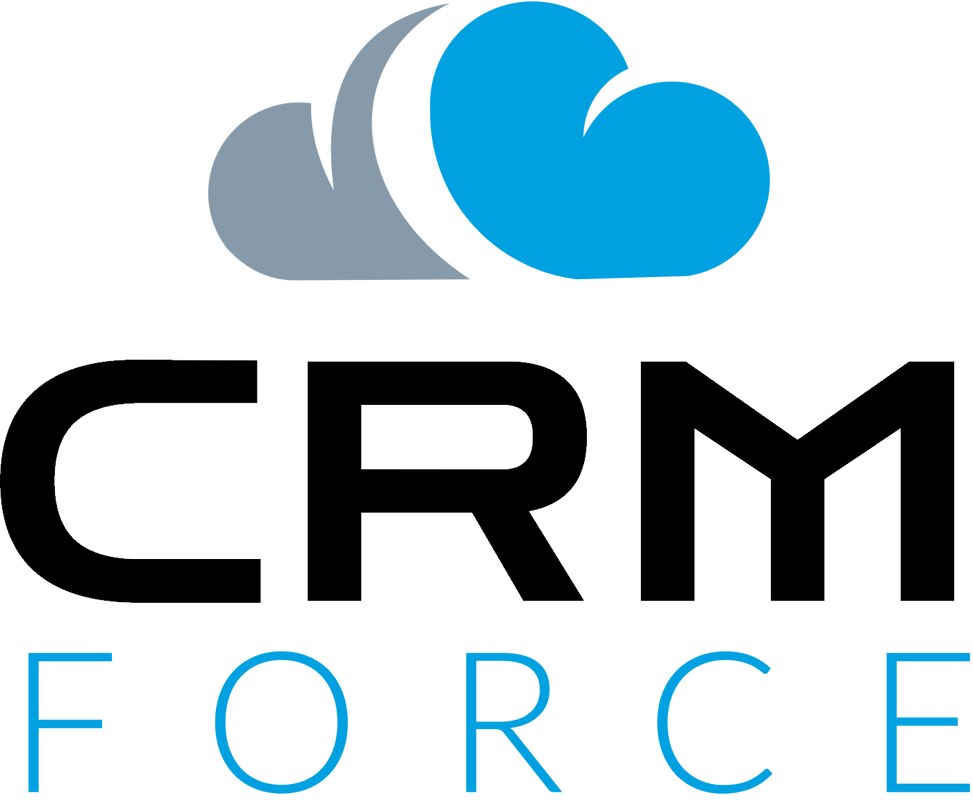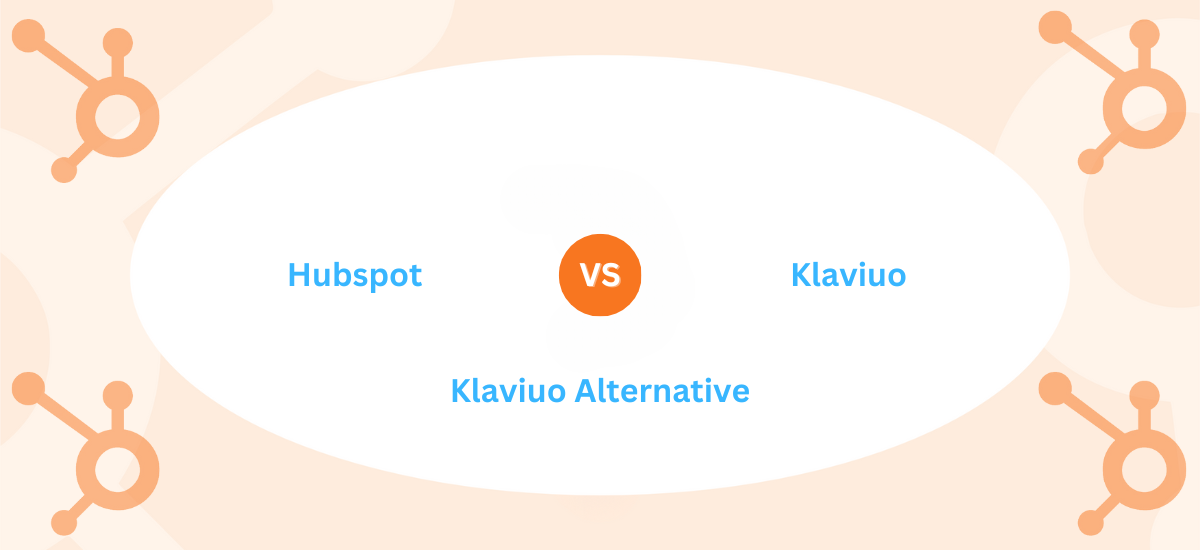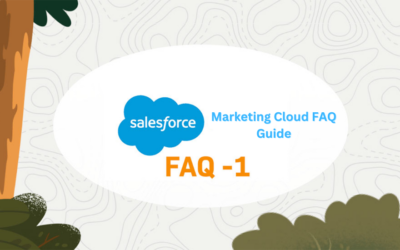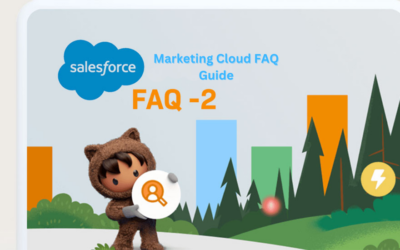In the rapidly evolving domain of e-commerce, the choice of marketing automation platforms plays a pivotal role in determining the success of businesses. Among the myriad options available, HubSpot and Klaviyo stand out as formidable contenders, each armed with distinctive technical capabilities aimed at transforming how businesses engage with their audiences. HubSpot, recognized as a comprehensive marketing automation solution, offers a multifaceted suite of tools that spans lead generation, customer relationship management (CRM), and marketing campaign optimization. Its technical prowess lies in the intricate design of marketing automation workflows, facilitating the seamless automation of diverse marketing processes. The platform’s CRM functionality is engineered to provide businesses with a centralized hub for managing customer interactions and data. With a keen focus on integration capabilities, HubSpot boasts seamless connectivity with popular e-commerce platforms, empowering businesses with the technical infrastructure to synchronize data effortlessly.
On the other side of the spectrum, Klaviyo positions itself as a specialized email marketing powerhouse tailored explicitly for e-commerce enterprises. In the technical realm, Klaviyo excels in its advanced email marketing features, providing users with a sophisticated arsenal for crafting targeted and personalized campaigns. The platform’s strength lies in its data-driven approach, leveraging robust behavioral tracking to understand and respond to customer actions. Klaviyo’s technical architecture enables dynamic content creation within emails, adapting the message based on recipient attributes and behaviors. With a focus on predictive analytics, the platform empowers businesses to forecast customer behavior, providing a technical edge for strategic marketing planning. As we embark on this technical journey comparing HubSpot and Klaviyo, we aim to dissect the intricacies of these platforms to empower businesses with the knowledge needed to make informed decisions in their pursuit of mastering e-commerce. If you need assistance with Salesforce CRM setup and optimization, companies like CRM Force can provide valuable expertise and support.
1- Understanding HubSpot
Features and Capabilities: HubSpot stands out in the market as a comprehensive marketing automation platform that encompasses a wide array of features catering to the needs of businesses across different industries. One of the key aspects that sets HubSpot apart is its robust marketing automation capabilities. The platform allows users to create, automate, and optimize marketing campaigns seamlessly.
Marketing Automation Workflow: HubSpot’s marketing automation functionality enables businesses to design intricate workflows that automate various aspects of their marketing efforts. Users can set up workflows to trigger specific actions based on user interactions, such as email opens, form submissions, or website visits. This feature streamlines lead nurturing, ensuring that leads progress through the sales funnel efficiently.
Lead Scoring: HubSpot includes a lead scoring system that assigns values to leads based on their interactions with the brand. This data-driven approach helps businesses prioritize leads, focusing their efforts on those more likely to convert. The lead scoring system takes into account factors like engagement with emails, website visits, and interactions with content.
Smart Content Personalization: HubSpot’s smart content feature allows businesses to personalize website content based on user attributes and behavior. This level of personalization enhances the user experience by delivering relevant content, ultimately increasing engagement and conversion rates. Smart content can be tailored based on criteria such as location, device type, and lifecycle stage.
Integrated Analytics: HubSpot offers robust analytics tools that provide insights into the performance of marketing campaigns. Users can track key metrics, such as website traffic, conversion rates, and social media engagement. The integrated analytics dashboard consolidates data from various sources, offering a holistic view of the marketing landscape.
Pros and Cons:
Pros:
All-in-One Solution: HubSpot serves as a one-stop solution for marketing, sales, and customer service, streamlining operations for businesses.
User-Friendly Interface: The platform is known for its intuitive and user-friendly interface, making it accessible to users with varying levels of technical expertise.
Scalability: HubSpot is scalable and caters to the needs of both small businesses and large enterprises, allowing for seamless growth.
Comprehensive Training Resources: HubSpot provides extensive training resources, including webinars, documentation, and a knowledge base, ensuring users can make the most of the platform’s features.
Cons:
Cost Considerations: While HubSpot offers a range of features, the cost can be a factor for small businesses, particularly those with budget constraints.
Learning Curve: Despite its user-friendly interface, mastering all the features may take time, and businesses might need to invest in training to utilize the platform effectively.
Integration Challenges: Although HubSpot integrates with many third-party applications, businesses with unique or specialized needs may face challenges in finding seamless integrations.
2- Klaviyo Unveiled
Klaviyo has gained recognition as a powerful email marketing platform specifically designed for e-commerce businesses. In this section, we will delve into the technical aspects of Klaviyo, focusing on its email marketing prowess, data-driven insights, and the platform’s pros and cons.
Email Marketing Mastery:
Advanced Email Campaigns: Klaviyo distinguishes itself with its advanced email marketing capabilities, offering a range of tools to create targeted and personalized campaigns. The platform supports the creation of various email types, including promotional campaigns, newsletters, and automated flows. Users can leverage a drag-and-drop editor to design visually appealing emails without the need for extensive coding knowledge.
Segmentation and Personalization: One of Klaviyo’s strengths lies in its segmentation and personalization features. Businesses can segment their audience based on a myriad of factors, such as purchase history, browsing behavior, and demographics. This granular segmentation allows for highly personalized email campaigns, enhancing engagement and conversion rates.
Dynamic Content: Klaviyo enables the creation of dynamic content blocks within emails. Dynamic content adapts based on recipient characteristics, ensuring that each individual receives content tailored to their preferences and behaviors. This dynamic approach contributes to increased relevance and improved user experience.
A/B Testing: For data-driven decision-making, Klaviyo incorporates A/B testing capabilities. Users can experiment with different elements of their email campaigns, such as subject lines, images, or calls-to-action, and analyze the performance metrics to optimize future campaigns. This iterative approach contributes to continuous improvement in email marketing strategies.
Data-Driven Insights:
Behavioral Tracking: At the core of Klaviyo’s effectiveness is its emphasis on behavioral tracking. The platform captures and analyzes user interactions, such as website visits, product views, and purchase behavior. This data forms the basis for highly targeted and automated email campaigns, ensuring that communication is timely and relevant.
Predictive Analytics: Klaviyo incorporates predictive analytics to forecast customer behavior and identify trends. By analyzing historical data, the platform can provide insights into potential customer actions, allowing businesses to proactively tailor their marketing strategies.
Real-Time Analytics Dashboard: Businesses using Klaviyo have access to a real-time analytics dashboard. This dashboard provides a comprehensive overview of key metrics, including open rates, click-through rates, and revenue generated from email campaigns. Real-time data empowers businesses to make informed decisions on the fly.
Pros and Cons:
Pros:
E-Commerce Focus: Klaviyo’s specialization in e-commerce ensures that its features are finely tuned to the unique needs of online retailers.
Robust Integration: The platform seamlessly integrates with various e-commerce platforms, ensuring smooth data flow between systems.
Actionable Insights: Klaviyo provides actionable insights derived from behavioral data, enabling businesses to make data-driven decisions.
Automated Flows: The ability to set up complex automated flows, triggered by specific customer actions, enhances efficiency in marketing campaigns.
Cons:
Learning Curve: Like any sophisticated platform, Klaviyo has a learning curve, particularly for users new to advanced email marketing concepts.
Cost Structure: The pricing model may be perceived as relatively higher for small businesses with limited budgets.
Limited Non-E-commerce Functionality: Klaviyo’s strengths lie in e-commerce, and businesses outside this realm might find some features less applicable.
3- Head-to-Head Comparison
In this section, we’ll conduct a technical analysis of HubSpot and Klaviyo, comparing key criteria such as user interface, pricing models, scalability, and customer support. This thorough examination aims to provide businesses with the technical insights needed to make an informed decision between these two platforms.
User Interface:
HubSpot:
Dashboard Customization: HubSpot’s user interface features a highly customizable dashboard, allowing users to arrange and prioritize elements based on their preferences. This flexibility ensures that users can access the most relevant data and tools efficiently.
Drag-and-Drop Editors: The platform employs intuitive drag-and-drop editors across various modules, simplifying the creation and customization of marketing materials, landing pages, and emails. This feature is particularly beneficial for users without extensive coding knowledge.
Task Automation: HubSpot’s user interface incorporates task automation tools, streamlining repetitive processes and enhancing overall efficiency. Users can set up automated workflows and processes to eliminate manual intervention where possible.
Klaviyo:
Focused Email-Centric Interface: Klaviyo’s user interface is centered around email marketing, reflecting its primary focus on this aspect of e-commerce. The platform’s dashboard provides quick access to email campaigns, analytics, and audience segmentation tools.
Visual Flow Builder: Klaviyo features a visual flow builder for designing intricate email automation workflows. This allows users to map out customer journeys and tailor communication based on specific triggers and actions.
Real-Time Analytics: Klaviyo’s user interface includes a real-time analytics dashboard that offers a snapshot of key metrics. This dashboard is designed for quick insights into the performance of ongoing campaigns.
Comparison:
HubSpot’s Versatility: HubSpot’s versatile and customizable interface caters to businesses with diverse needs beyond email marketing. It provides a more comprehensive solution for managing marketing, sales, and customer service processes in a unified environment.
Klaviyo’s Email-Centric Focus: Klaviyo’s interface is laser-focused on email marketing, making it an excellent choice for businesses primarily seeking advanced email automation capabilities.
Pricing Models:
HubSpot:
Tiered Pricing Structure: HubSpot follows a tiered pricing structure based on the specific features and services required. This structure allows businesses to choose a plan that aligns with their current needs and scale as their requirements evolve.
Add-Ons and Customization: HubSpot offers various add-ons and customization options, allowing businesses to tailor their plans to match their unique requirements. This flexibility can be advantageous for businesses with specific needs not covered in standard plans.
Klaviyo:
Email Volume-Based Pricing: Klaviyo’s pricing is primarily based on the volume of emails sent. This straightforward approach allows businesses to pay for the services they use, making it scalable for both small and large enterprises.
Additional Costs for Features: While Klaviyo’s core pricing is based on email volume, certain advanced features may incur additional costs. Businesses should carefully assess their requirements to determine the full cost of implementing Klaviyo with all desired features.
Comparison:
HubSpot’s Customization Options: HubSpot’s tiered pricing and add-on structure provide businesses with the flexibility to choose features that align with their specific goals. This can be advantageous for businesses looking for a tailored solution.
Klaviyo’s Simplicity: Klaviyo’s straightforward pricing based on email volume simplifies cost calculations. This simplicity may be preferable for businesses primarily focused on email marketing.
Scalability and Flexibility:
HubSpot:
Scalable Features: HubSpot is designed to be scalable, accommodating the needs of both small businesses and large enterprises. This scalability is evident in its diverse range of features, allowing businesses to expand their use of the platform as they grow.
Integration Capabilities: HubSpot offers a vast marketplace of integrations with third-party applications, enhancing its adaptability to various business processes. The platform’s open API allows businesses to build custom integrations as needed.
Klaviyo:
E-commerce Focus: Klaviyo’s scalability is geared towards e-commerce businesses. As businesses grow, Klaviyo’s features, especially those related to email marketing automation, can seamlessly adapt to the increasing demands of a larger customer base.
E-commerce Platform Integrations: Klaviyo integrates seamlessly with various e-commerce platforms, ensuring that businesses can scale their operations without disrupting their existing tech stack.
Comparison:
HubSpot’s Generalist Approach: HubSpot’s scalability extends across various business functions, making it suitable for businesses with diverse needs. This versatility can be advantageous for companies planning extensive growth across multiple areas.
Klaviyo’s E-commerce Specialization: Klaviyo’s scalability is particularly attuned to the growth trajectories of e-commerce businesses. The platform’s focus on e-commerce-specific features makes it a natural fit for businesses operating in this space.
Customer Support:
HubSpot:
Knowledge Base and Documentation: HubSpot provides extensive documentation, tutorials, and a knowledge base, empowering users to find answers to common queries independently.
Community Forums: HubSpot maintains active community forums where users can seek advice, share experiences, and learn from each other.
Ticketing System: For more complex issues, HubSpot offers a ticketing system, ensuring that users can escalate their concerns and receive personalized support.
Klaviyo:
Dedicated Support Team: Klaviyo offers a dedicated support team to assist users with technical issues and challenges.
Educational Resources: The platform provides educational resources, including webinars and guides, to help users make the most of Klaviyo’s features.
Priority Support for Higher Tiers: Higher-tier Klaviyo plans come with priority support, ensuring faster response times for critical issues.
Comparison:
HubSpot’s Comprehensive Support Ecosystem: HubSpot’s extensive support ecosystem, including documentation, community forums, and a ticketing system, caters to users at various levels of technical expertise.
Klaviyo’s Dedicated Support: Klaviyo’s emphasis on a dedicated support team, especially in higher-tier plans, ensures users have direct access to assistance for their specific needs.
4- Klaviyo Alternatives
In this section, we will explore alternative options to Klaviyo, delving into the technical details of Mailchimp, ActiveCampaign, and Omnisend. Each of these platforms offers unique features and capabilities, providing businesses with diverse choices for their email marketing and automation needs.
Mailchimp: A Well-Known Contender
Email Marketing Features:
Mailchimp is renowned for its email marketing features, offering businesses a robust platform for creating, sending, and analyzing email campaigns. The platform includes a user-friendly drag-and-drop editor for designing visually appealing emails without the need for extensive coding skills.
Automation Workflows:
Similar to Klaviyo, Mailchimp provides automation workflows that enable businesses to set up triggered email sequences based on user interactions. This includes welcome emails, abandoned cart emails, and personalized drip campaigns.
Segmentation and Personalization:
Mailchimp excels in audience segmentation and personalization. Businesses can segment their email lists based on various criteria, ensuring targeted communication that resonates with specific audience segments.
Pros and Cons:
Pros:
Ease of Use: Mailchimp’s intuitive interface makes it accessible to users with varying levels of technical expertise.
Integration Ecosystem: The platform integrates seamlessly with a wide range of third-party applications, enhancing its adaptability to different business processes.
Cons:
Limited Automation Complexity: While Mailchimp offers automation workflows, businesses with more complex automation requirements may find the platform somewhat limiting.
ActiveCampaign: The Automation Specialist
Marketing Automation Focus:
ActiveCampaign positions itself as a marketing automation specialist, offering a comprehensive suite of tools for automating various marketing processes. The platform’s automation builder allows businesses to create intricate automation workflows tailored to their specific needs.
Behavioral Tracking:
Similar to Klaviyo, ActiveCampaign emphasizes behavioral tracking. The platform captures and analyzes user interactions, enabling businesses to trigger automated actions based on customer behavior.
Deep Integration Capabilities:
ActiveCampaign supports deep integrations with numerous third-party applications, allowing businesses to synchronize data across their tech stack seamlessly.
Pros and Cons:
Pros:
Advanced Automation: ActiveCampaign’s automation capabilities are robust and cater to businesses with sophisticated automation needs.
Predictive Sending: The platform includes features like predictive sending, which optimizes the timing of email campaigns based on individual user behavior.
Cons:
Learning Curve: Given its extensive features, ActiveCampaign may have a steeper learning curve for users new to advanced marketing automation concepts.
Omnisend: Tailored for E-Commerce
E-Commerce-Centric Features:
Omnisend positions itself as an email marketing platform specifically tailored for e-commerce businesses. The platform includes features such as automated product recommendations, cart recovery emails, and order confirmation workflows.
Omni-Channel Marketing:
Omnisend goes beyond email marketing by incorporating omni-channel marketing features. Businesses can leverage SMS marketing, push notifications, and other channels to engage with their audience.
Segmentation Based on E-Commerce Data:
The platform allows businesses to segment their audience based on e-commerce data, such as purchase history and browsing behavior, ensuring targeted and relevant communication.
Pros and Cons:
Pros:
E-commerce Focus: Omnisend’s specialization in e-commerce makes it a powerful solution for businesses operating in this industry.
Integrated Channels: The platform’s support for multiple channels enhances its versatility in reaching customers through various touchpoints.
Cons: May Lack Generalist Features: While Omnisend excels in e-commerce, businesses with broader marketing needs may find certain generalist features lacking.
Conclusion
In the dynamic landscape of e-commerce marketing automation, the choice between HubSpot and Klaviyo hinges on the technical nuances that align with the unique needs and goals of businesses. HubSpot’s versatility shines through its intricate marketing automation workflows and robust CRM functionality, offering businesses a unified platform to streamline operations. The technical excellence of HubSpot is evident in its scalable architecture, enabling seamless integration with various e-commerce platforms and third-party applications. The user-friendly interface, coupled with comprehensive training resources, adds a technical layer of accessibility for users to harness the platform’s full potential.
As businesses navigate the technical intricacies of their marketing automation strategy, the consideration of a “Klaviyo Alternative” becomes pivotal. While Klaviyo excels in e-commerce-centric email marketing with its advanced features and behavioral tracking, exploring alternatives like Mailchimp, ActiveCampaign, and Omnisend adds depth to the decision-making process. These alternatives provide businesses with diverse technical approaches, from Mailchimp’s user-friendly interface to ActiveCampaign’s advanced marketing automation capabilities and Omnisend’s focus on omni-channel marketing tailored for e-commerce. The technical evaluation of these Klaviyo alternatives ensures that businesses can make informed decisions that align with their unique technical requirements, ultimately mastering the intricacies of e-commerce marketing automation. To learn more about how CRM Force can assist you in recruiting top CRM talent and optimizing your CRM strategies for successful drip campaigns, contact us today. Together, let’s maximize your customer engagement Contact Us today.





